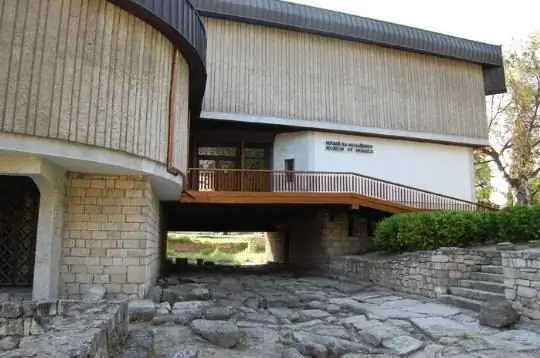
Description of the attraction
The Museum of Ancient Mosaics in the city of Devnya is located in a complex specially built according to the project of the architect Kamen Goranov on the foundations of an antique building of the late III - early IV century (the time of Constantine I the Great). Previously, another structure stood on this site, which was destroyed during the invasion of the Goths in 250-251.
The museum complex was created with the aim of preserving the unique finds discovered here during archaeological excavations that have been carried out since 1976. It covers the area of an entire block, reaching 37 meters in length and width. Once there was the Roman city of Marcianapolis, which was one of the largest in this part of the empire. The room was made in the tradition of the Greco-Roman atrium-peristyle building. Near the courtyard (11x5, 8 m) part of the floor, covered with stone slabs, has been preserved. On three sides, the atrium is surrounded by a covered gallery with a colonnade. There are 21 living quarters, outbuildings and warehouses with a total area of 1402 sq. meters. The walls of the residential premises were plastered with plaster mortar and painted with colored frescoes. The interior of the five buildings is decorated with mosaics - one of the finest examples of Roman art of the time found in Bulgaria. Three of these mosaics are displayed in the museum in the same place where they were found, the rest, after partial restoration, were moved to another room.
The mosaics are made up of small stones - cubes of marble, limestone, baked clay and colored glass. They mainly depict characters and scenes from Roman and Greek mythology, animals and birds, plant and geometric motifs.
On the floor in the living room there is a picture of the shield of the goddess Pallas Athena, which depicts the severed head of the Gorgon Medusa. The mosaic in the bedroom is an illustration of a love story. Most of the mosaic paintings in the large hall, including those illustrating the myth of Ganymede. The floor of the room for women is the painting "Seasons". Another mosaic, known as the Panonski Voluti, was discovered during excavations in the eastern part of the building.
The museum also displays a variety of materials related to the peculiarities of the architecture of the city and the way of life of its inhabitants.






